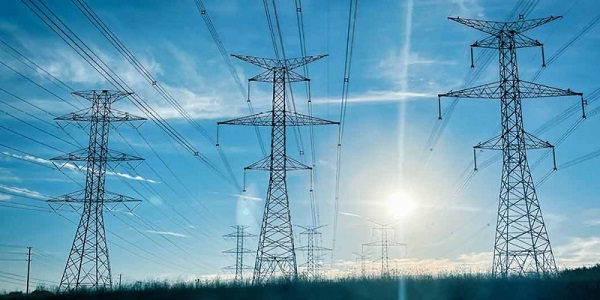Bruce Dowbiggin
Will Cable Cord Cutting Shock Pro Sports Back To Its Senses?

If there’s one constant in modern sports it’s bewilderment at how high salaries have risen for elite athletes. Where a million dollars a year was once the “unheard-of” threshold for salaries, today’s stars are easily taking home 20, 40, even 50 million a year under the new economy in sports. Even college athletes, once forbidden to accept remuneration, are cashing in millions for their name, image or likeness.
When people complain about overpaid athletes to IDLM we simply say the money is in the business, who else do you think should get the cash? Ditto for franchise values, where the Denver Broncos recently sold for a staggering $4.65 B. and the Washington Commanders might fetch $6B.
Largely the infusion of riches in pro sports has come from TV and digital-rights contracts between leagues and regional sports networks (RSN). Those RSNs are the carriers of the local and regional teams. Packaged through cable or satellite carriers they deliver valuable programming dollars to leagues. And for smaller media markets they are a vital source of revenue to keep up with the big boys whose ancillary revenues are pumped by many more customers.
As just one example, the MLB St. Louis Cardinals are currently earning about $66 million a year from their 15-year, $1B deal they signed with Fox Sports in 2015. There are 18 other teams on Sinclair/Diamond local TV deals, all of whom rely on RSNs to play New York salaries in Pittsburgh or Kansas City.
In Canada, as opposed to the American model, regional sports contracts are held directly by either TSN or Sportsnet, national carriers. The monopoly status has suppressed revenues to Canadian NHL, MLB or NBA teams relative to the deals cut in large markets such as New York’s tri-state area, southern California or Chicago.

Recently TV rights packages values were boosted by the arrival of Amazon, YouTube and Google which began to compete with traditional networks for U.S. broadcast rights. But now RSNs are threatened by the cord-cutting trend that sees American and Canadian consumers dumping their traditional bundlers of services to go à la carte digital directly with the producers of programming. ( In Canada the DAZN network has gone head-to-head with TSN for NFL games on a digital deal with the league.)
This past week the American cable giant Comcast reported a year-over-year 11 percent loss in its customer base. That’s about two million Americans saying “I can do without the middle men and the useless channels. I want to subscribe directly to the producers of the material I want to see.” From a peak of 110.5 million customers in 2013 the Comcast market is estimated to drop as low as 65 million customers by 2025.
In part this is consumers shedding programming bundles they never watch and bloated subscription fees as they tighten their belts. It’s also a reflection on the Netflix streaming revolution sparked by Covid-19 lockdowns that saw locked-down consumers get used to the convenience of directly streaming programming from Netflix or Amazon Prime or Disney without paying for a raft of useless channels.
Advertisers have noticed, too. They are headed to streaming services, where their messages can be more targeted to desired audiences than cable TVs scattershot approach.
The impact is being seen in the U.S. where Diamond Sports Group, which controls a huge portion of the pro sports RSNs, is said to be headed to bankruptcy court to restructure its $8.6B in debt. “There are a lot of business and financial terms and policies to work through,” says Deadspin, “but the long and short of it is that DSG is likely going to skip an interest payment it owes, which should be enough for them to get to the bankruptcy claim they’ve been rumored to be after for a while now.”
Bloomberg reported that if they file for bankruptcy it could “potentially put at risk crucial broadcasting rights revenues” for major North American sports networks. Greg Boris, a sports management professor at Adelphi University summed up the looming disaster for pro sports. He told The Score that RSNs have “been a golden goose. You remove cable TV from the scenario, and franchises are worth a fraction of what they are today, players make a fraction of their salaries today… the boom has been going on for almost 30 years. But the vast majority of the people that pay never watch (services they purchase). That’s been the model.”

Leagues are now investigating what to do if the RSN model collapses. Currently the leagues operate direct streaming services for customers wishing to watch out-of-town games not involving their local team. They could simply add the RSN rights too these streams.But direct-to-consumer can be very costly. The Disney+ operation was thought to be a slam dunk, but now management at Disney admits it will be a few years before the operation gets out of the red. American carrier Comcast launched the Peacock network as an outlet for NBC content. It lost $2.5B in 2022 and projects to lose another $2B in 2023. Similar startups such as CBC Gem have been flops.
Direct-to-consumer is also not the easy money machine that RSNs were. If a league or a team operates a direct customer service it takes on the responsibility of signing up and maintaining its customer base. That means dealing with the fickle fans who might drop his/ her package to an NHL, NFL, MLB or NBA team for a few years till the club improves.
That could be a disaster for underperforming teams like MLB’s Pirates or NHL Vancouver Canucks who had the assurance that, while their programming sucked, the other offerings on the cable package were worth customers retaining the service. Direct-to-consumer could, however, be a ray of hope for fans of bad teams that force clubs to finally get serious about producing a winning product.
This potential financial shortfall is probably one of the reason pro sports has so fervently embraced sports betting— to the annoyance of many fans. If the TV money goes, they’ll need every dollar they can find to pay out the contracts they’ve been issuing with impunity the past decade.
Sign up today for Not The Public Broadcaster newsletters. Hot takes/ cool slants on sports and current affairs. Have the latest columns delivered to your mail box. Tell your friends to join, too. Always provocative, always independent. https://share.hsforms.com/16edbhhC3TTKg6jAaRyP7rActsj5
Bruce Dowbiggin @dowbboy is the editor of Not The Public Broadcaster A two-time winner of the Gemini Award as Canada’s top television sports broadcaster, he’s a regular contributor to Sirius XM Canada Talks Ch. 167. Inexact Science: The Six Most Compelling Draft Years In NHL History, his new book with his son Evan, was voted the seventh-best professional hockey book of all time by bookauthority.org . His 2004 book Money Players was voted sixth best on the same list, and is available via http://brucedowbigginbooks.ca/book-personalaccount.aspx
Bruce Dowbiggin
MLB’s Exploding Chequebook: Parity Is Now For Suckers
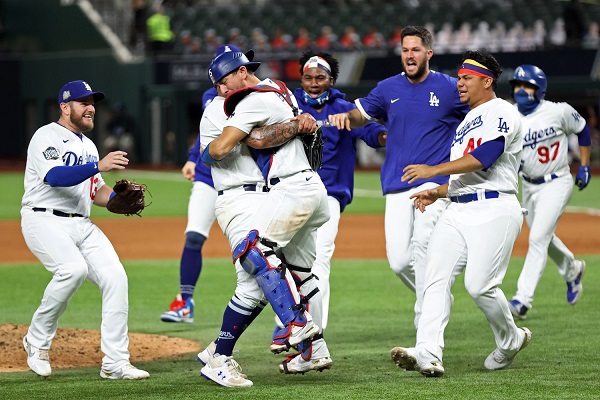
MLB has seen parity and proclaimed, “We don’t give a damn!” Okay, they didn’t say that. In fact they insist the opposite is true. They’re all about competition and smaller markets getting a shot at a title. But as the 2024 offseason spending shows, believe none of what you hear and half of what you see in MLB.
Here’s the skinny: Juan Soto‘s contract with the NY Mets — 15 years and guaranteeing $765 million, not a penny of which is deferred. Max Fried signed an eight-year, $218 million deal with the New York Yankees. Later, Nathan Eovaldi secured a three-year, $75 million contract to return to the Texas Rangers. Blake Snell (five years, $182 million with the Los Angeles Dodgers) and Matthew Boyd (two years, $29 million with the Chicago Cubs) added to the splurge.
There’s one more thing that stands out. MLB has no trouble with the financial big boys in New York, Los Angles, Texas, Toronto, Atlanta and Chicago shelling out money no small market dare pay. In the MLB cheap seats, Tampa, Pittsburgh and Miami can’t send out quality players fast enough. But MLB is cool with that, too, as those paupers get a healthy slice of TV money.
So yes, they’re all about talking parity with their luxury tax system. But to keep the TV, digital, betting and marketing lucre flowing they have to have large media markets swinging the heaviest bats come postseason. The question is, do MLB fans care the way they used to about parity? It says here they don’t. More want to seed best-on-best more often. Which is brutal but refreshing.

Their sister leagues, married to draconian salary cap systems, are still pushing parity, even as they expand beyond recognition. In our 2004 book Money Players, legendary Boston Bruins coach/ GM Harry Sinden noted, “The problem with teams in the league, is that there were (then) 20 teams who all think they are going to win the Stanley Cup and they all are going to share it. But only one team is going to win it. The rest are chasing a rainbow.”
And that was before the expansion Vegas Golden Knights won a Cup within five years while the third-year Seattle Kraken made a run in those same 2023 playoffs. There are currently 32 teams in the league, each chasing Sinden’s rainbow of a Stanley Cup. That means 31 cranky fan bases every year. And 31 management teams trying to avoid getting fired.
Maybe we’ve reached peak franchise level? Uh, no. Not so long as salary-capped leagues can use the dream of parity to sell more franchises. As we wrote in October of 2023, “If you believe the innuendo coming from commissioner Gary Bettman there is a steady appetite for getting a piece of the NHL operation. “The best answer I can give you is that we have continuous expressions of interest from places like Houston, Atlanta, Quebec City, Salt Lake City, but expansion isn’t on the agenda.” In the next breath Bettman was predicting that any new teams will cost “A lot, a lot.”
Deputy commissioner Bill Daly echoed Bettman’s caution about a sudden expansion but added, ”Having said that, particularly with the success of the Vegas and Seattle expansions, there are more people who want to own professional hockey teams.” Translation: If the NHL can get a billion for a new team, the heck with competitive excellence, the clock might start ticking sooner. After all, small-market Ottawa just went for $950.”
It’s not just the expansion-obsessed NHL talking more teams. MLB is looking to add franchises. Abandoned Montreal is once more getting palpitations over rumours that the league wants to return to the city that lost its Expos in 2005. Recent reports indicate that while MLB might prefer Salt Lake City and Nashville it also feels it must right the wrong left when the Expos moved to Washington DC 19 years ago.

The city needs a new ballpark to replace disastrous Olympic Stadium. They’ll also need more than Tom Brady to fund the franchise fee and operating costs. And Quebec corporate support— always transitory in the Expos years— will need to be strong. But two more MLB franchises within five years is a lock.
While the NBA is mum on going past 30 teams it has not shut the door on expansion after seeing the NHL cashing in. Neither has the cash-generating monster known as the NFL where teams currently sell for over six billion US. The NFL is eyeing Europe for its next moves.
The question that has to be asked in this is, WTF, quality of competition? The more teams in a league the lower the chances of even getting to a semifinal series let alone a championship. Fans in cities starved for a championship— the NFL’s Detroit Lions or Cleveland Browns are entering their seventh decade without a title or the Toronto Maple Leafs title-less since 1967— know how corrosive it can be.
Getting to 34, 36, maybe 40 teams makes for a short-term score for owners, but it could leave leagues with an entire strata of loser teams that no one—least of all networks, carriers and advertisers—wants to see. Generations of fans will be like Canuck supporters, going their entire lives without a championship.

In addition, as we’ve argued in our 2018 book Cap In Hand: How Salary Caps Are Killing Pro Sports and How The Free Market Can Save Them, watering down the product with a lot of teams no one wants to watch nationally or globally seems counter productive. The move away from quality toward quantity serves only the gambling industry. But since when has Gary Bettman Truly cared about quality of the product? So long as he gets to say, “We have a trade to announce” at the Draft, he’s a happy guy.
When we published Cap In Hand we proposed a system like soccer with ranked divisions using promotion and relegation to ensure competition, not parity. Most of the interviewers we spoke to were skeptical of the idea. But as MLB steams closer to economic Darwinism our proposal is looking more credible every day. Play at the level you can afford. Or just watch Ted Lasso. Your choice.
Bruce Dowbiggin @dowbboy is the editor of Not The Public Broadcaster A two-time winner of the Gemini Award as Canada’s top television sports broadcaster, he’s a regular contributor to Sirius XM Canada Talks Ch. 167. His new book Deal With It: The Trades That Stunned The NHL And Changed hockey is now available on Amazon. Inexact Science: The Six Most Compelling Draft Years In NHL History, his previous book with his son Evan, was voted the seventh-best professional hockey book of all time by bookauthority.org . His 2004 book Money Players was voted sixth best on the same list, and is available via brucedowbigginbooks.ca.
Bruce Dowbiggin
Bordering On Legend: Why Josh Allen Is Hero to Two Nations

Headline: Josh Allen sets NFL mark with 3 TD passes and 3 TD runs, but Matthew Stafford’s Rams hold off Buffalo Bills 44-42
Canada has no NFL teams to its name. But different parts of the country have a fervent rooting interest in a team. Often it’s because of the local American markets that have been piped in by cable TV companies. The Lower Mainland of B.C. is fertile Seattle Seahawks territory. Alberta is partial to the Denver Broncos (owned for a long time by an Albertan). Manitoba and Saskatchewan get Detroit stations on their cable but are equally invested in the Minnesota Vikings.

In the East, Quebec and the Maritimes have plenty of New York Giants (older) and New England Patriots (Tom Brady) fandom. In southern Ontario, where the locals grew up on a diet of Buffalo TV icons Irv Weinstein and Tom Joles, there is little question that the Buffalo Bills are top of mind. As many as 20 percent of the crowd on game day comes south across the Peace Bridge. TSN and Sportsnet closely cover the Bills closely.
Not so long ago Rogers thought playing Bills games in Toronto might be a thing. For reasons ranging from ticket prices to the Bills ineptitude the gamble flopped. So they gave up the plan just as the franchise’s fortunes were to take a great leap forward in the name of quarterback Josh Allen, a raw talent from Wyoming, of all places. Opinions on whether his athletic ability and size (6-foot-5, 240 pounds) would translate in the NFL were many.
After all, while his QB rivals played in the Rose Bowl or the Orange Bowl, Allen had starred in the Great Idaho Potato Bowl. Using a pick obtained from Tampa, the Bills got him seventh in the loaded 2018 draft behind more heralded prospects Baker Mayfield and Sam Darnold. He was considered the riskiest pick in the top seven. While none of the players taken before Allen have flopped, Mayfield and Arnold have wandered in the wilderness before finding success. Saquon Barkley has finally reached superstardom with a second team.

But not one of that septet has had quite the career arc of Allen. In just two years he took them to their first postseason since 1995. The next season he led them to the AFC Championship game where he lost to his future kryptonite, Patrick Mahomes and the Kansas City Chiefs. During his Buffalo tenure, he has led the team to a total of six playoff appearances, five consecutive division titles, and five postseason victories. Only a Super Bowl trip has eluded him.
But statistics don’t capture Allen’s dual-threat impact on the NFL. He’s not been alone. In our in 2022 column NFL Run/ Pass Maestros: Can’t Catch This, we wrote about the move to more mobile, improvisational QBs . Players such as Allen, Mahomes and Lamar Jackson of Baltimore, the two-time NFL MVP. Stick-in-the-pockets like Jared Goff, Kirk Cousins and Matthews Stafford are still viable threats, but it’s clear that to stay one step ahead of defensive coordinators a QB needs the option of rolling out, isolating a defender and making him choose between the run or pass.

Where it was rare for QBs to gain more than a few years running it’s now common to see six or seven QBs in the Top 50 rushers in the NFL. Currently six QBs are in the Top 50 rushers in the league. But where the competition have been race cars, Allen has been a snow plow, going through, not around, defenders.
His feats of strength would impress George Costanza’s father. Week after week he makes single-handed plays that deliver the Bills victory. His weekly highlight reel of mad dashes and bazooka-liken throws had led the Bills to six straight wins before’s Sunday’s loss. Two weeks ago it was a hook-and-ladder TD lateral in the snow from teammate Amari Cooper in which he received credit for a TD pass and a TD reception on the same play. On Sunday in Los Angeles, he added 82 yards rushing to a mighty 342 yards passing.
This has led his fans to cover their eyes as he smashes into opponents or the turf. Bills fans know that their success is untranslatable without Allen, who’s now considered the favourite for MVP with four games left. Career backup Mitch Trubisky sits behind Allen, which is like Pete Buttigieg backing up Elon Musk.
Allen has been the beneficiary of the NFL taking the target off QBs as the 2020s dawned. “In act of mercy or perhaps to juice offence, the NFL took pity on the athletic QBs. ‘It feels like the NFL is in a moment when a defender can get called for roughing the passer or unnecessary roughness simply by breathing hard on the QB,” writes Joe Mahoney of SB Nation. “It’s a reason why the career longevity for running QBs like Lamar Jackson, Kyler Murray, Jalen Hurts, Justin Fields, Josh Allen, and Taysom Hill should be much longer the career lengths of some of the previous elite dual-threat QBs’”.
This was all written before Sunday’s epic personal offence total in a losing effort against the Rams— just the third defeat all season for the Bills. At one point they trailed by 17 before rallying to lose by just two.
Perhaps the only thing holding back Allen from a title now is the game strategy of HC Sean McDermott and the coaches of the Bills— as their fans know only too well since the last-second disaster against KC in the 2022 AFC final when McDermott couldn’t kill off 13 seconds at the end of the game. Allowing the Chiefs to come back for a win and a trip to the Super Bowl.
Sunday he and his OC Joe Brady wasted a time-out at the conclusion of a monumental comeback that prevented the Bills getting a shot at a game-winning field goal. It was not the first time the seventh-year head coach had muffed game-ending strategy this season. Losses to Houston and Baltimore also featured faulty game management. Otherwise the Bills might be undefeated in 2024.
But we won’t know for a month, at least, whether that’s enough of a drag on Superman’s cape to prevent a Super Bowl appearance. For now, Bills fans in Canada and the U.S. can only marvel at what’s happened to the farm boy from rural California who is both irresistible object and unstoppable force in the same body.
Bruce Dowbiggin @dowbboy is the editor of Not The Public Broadcaster A two-time winner of the Gemini Award as Canada’s top television sports broadcaster, he’s a regular contributor to Sirius XM Canada Talks Ch. 167. His new book Deal With It: The Trades That Stunned The NHL And Changed hockey is now available on Amazon. Inexact Science: The Six Most Compelling Draft Years In NHL History, his previous book with his son Evan, was voted the seventh-best professional hockey book of all time by bookauthority.org . His 2004 book Money Players was voted sixth best on the same list, and is available via brucedowbigginbooks.ca.
-

 illegal immigration2 days ago
illegal immigration2 days agoDelusional Rumour Driving Some Migrants in Mexico to Reach US Border
-
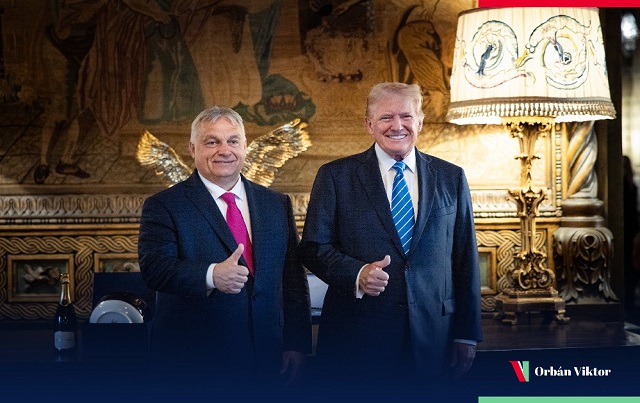
 conflict1 day ago
conflict1 day agoTrump has started negotiations to end the war in Ukraine
-
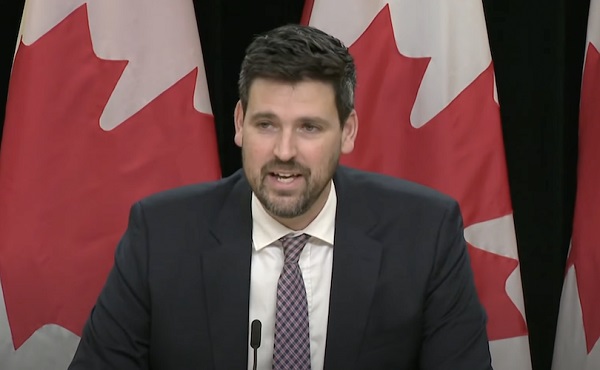
 Housing1 day ago
Housing1 day agoTrudeau loses another cabinet member as Housing Minister Sean Fraser resigns
-
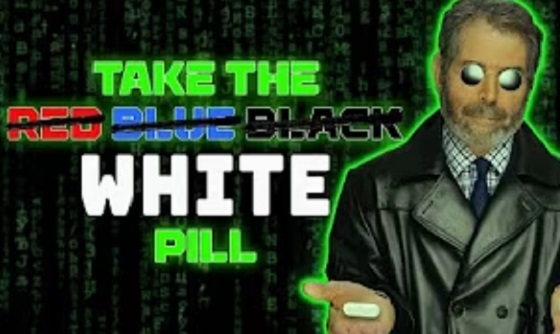
 Economy1 day ago
Economy1 day agoThe White Pill: Big Government Can Be Defeated (Just Ask the Soviet Union)
-
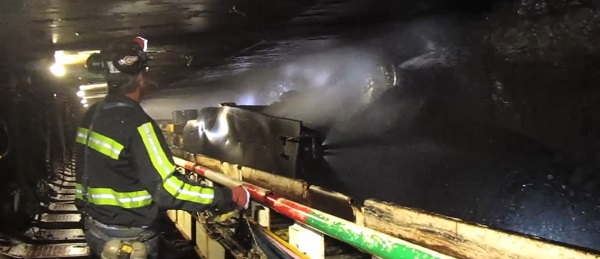
 Energy2 days ago
Energy2 days agoDig, Baby, Dig: Making Coal Great Again. A Convincing Case for Coal
-

 Business2 days ago
Business2 days agoFiscal update reveals extent of federal government mismanagement
-
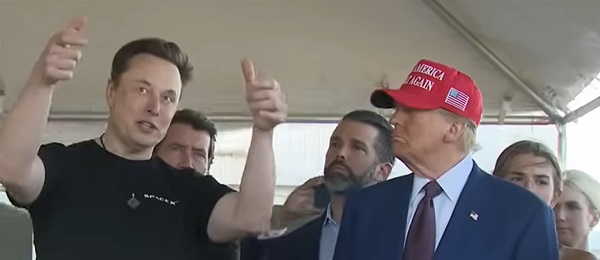
 Business2 days ago
Business2 days ago‘There Are No Sacred Cows’: Charles Payne Predicts DOGE Will Take Bite Out Of Military Industrial Complex
-

 Brownstone Institute1 day ago
Brownstone Institute1 day agoA Potpourri of the World’s Unexposed Scandals





